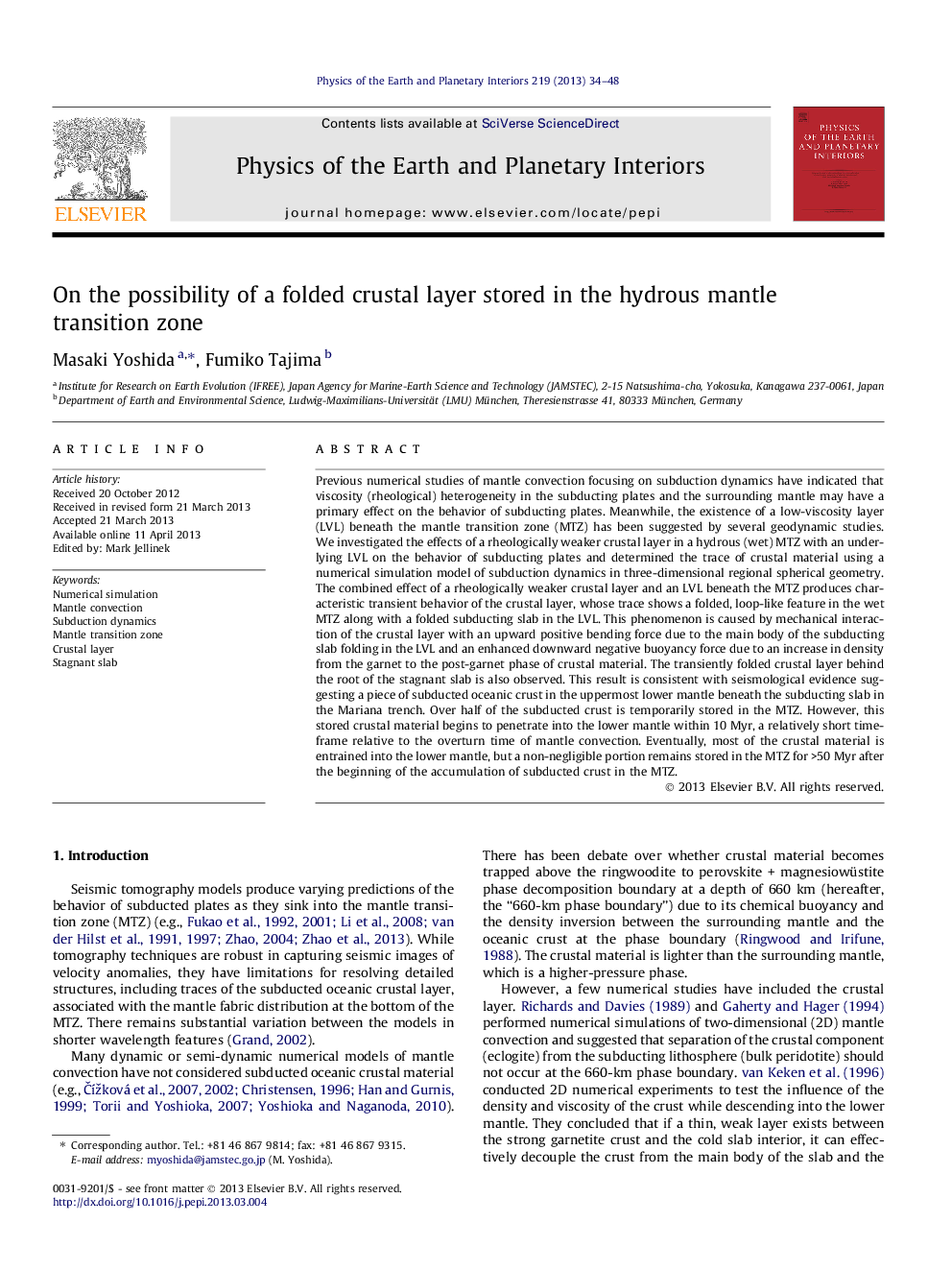| کد مقاله | کد نشریه | سال انتشار | مقاله انگلیسی | نسخه تمام متن |
|---|---|---|---|---|
| 4741723 | 1641522 | 2013 | 15 صفحه PDF | دانلود رایگان |
• Numerical simulation of subduction dynamics in 3D spherical geometry is performed.
• Low-viscosity crustal layer in the hydrous mantle transition zone is considered.
• Thin, low-viscosity layer beneath the mantle transition zone is also considered.
• Folded, loop-like crustal layer stored in the mantle transition zone is observed.
• Transiently folded crustal layer behind the root of the stagnant slab is observed.
Previous numerical studies of mantle convection focusing on subduction dynamics have indicated that viscosity (rheological) heterogeneity in the subducting plates and the surrounding mantle may have a primary effect on the behavior of subducting plates. Meanwhile, the existence of a low-viscosity layer (LVL) beneath the mantle transition zone (MTZ) has been suggested by several geodynamic studies. We investigated the effects of a rheologically weaker crustal layer in a hydrous (wet) MTZ with an underlying LVL on the behavior of subducting plates and determined the trace of crustal material using a numerical simulation model of subduction dynamics in three-dimensional regional spherical geometry. The combined effect of a rheologically weaker crustal layer and an LVL beneath the MTZ produces characteristic transient behavior of the crustal layer, whose trace shows a folded, loop-like feature in the wet MTZ along with a folded subducting slab in the LVL. This phenomenon is caused by mechanical interaction of the crustal layer with an upward positive bending force due to the main body of the subducting slab folding in the LVL and an enhanced downward negative buoyancy force due to an increase in density from the garnet to the post-garnet phase of crustal material. The transiently folded crustal layer behind the root of the stagnant slab is also observed. This result is consistent with seismological evidence suggesting a piece of subducted oceanic crust in the uppermost lower mantle beneath the subducting slab in the Mariana trench. Over half of the subducted crust is temporarily stored in the MTZ. However, this stored crustal material begins to penetrate into the lower mantle within 10 Myr, a relatively short timeframe relative to the overturn time of mantle convection. Eventually, most of the crustal material is entrained into the lower mantle, but a non-negligible portion remains stored in the MTZ for >50 Myr after the beginning of the accumulation of subducted crust in the MTZ.
Journal: Physics of the Earth and Planetary Interiors - Volume 219, June 2013, Pages 34–48
